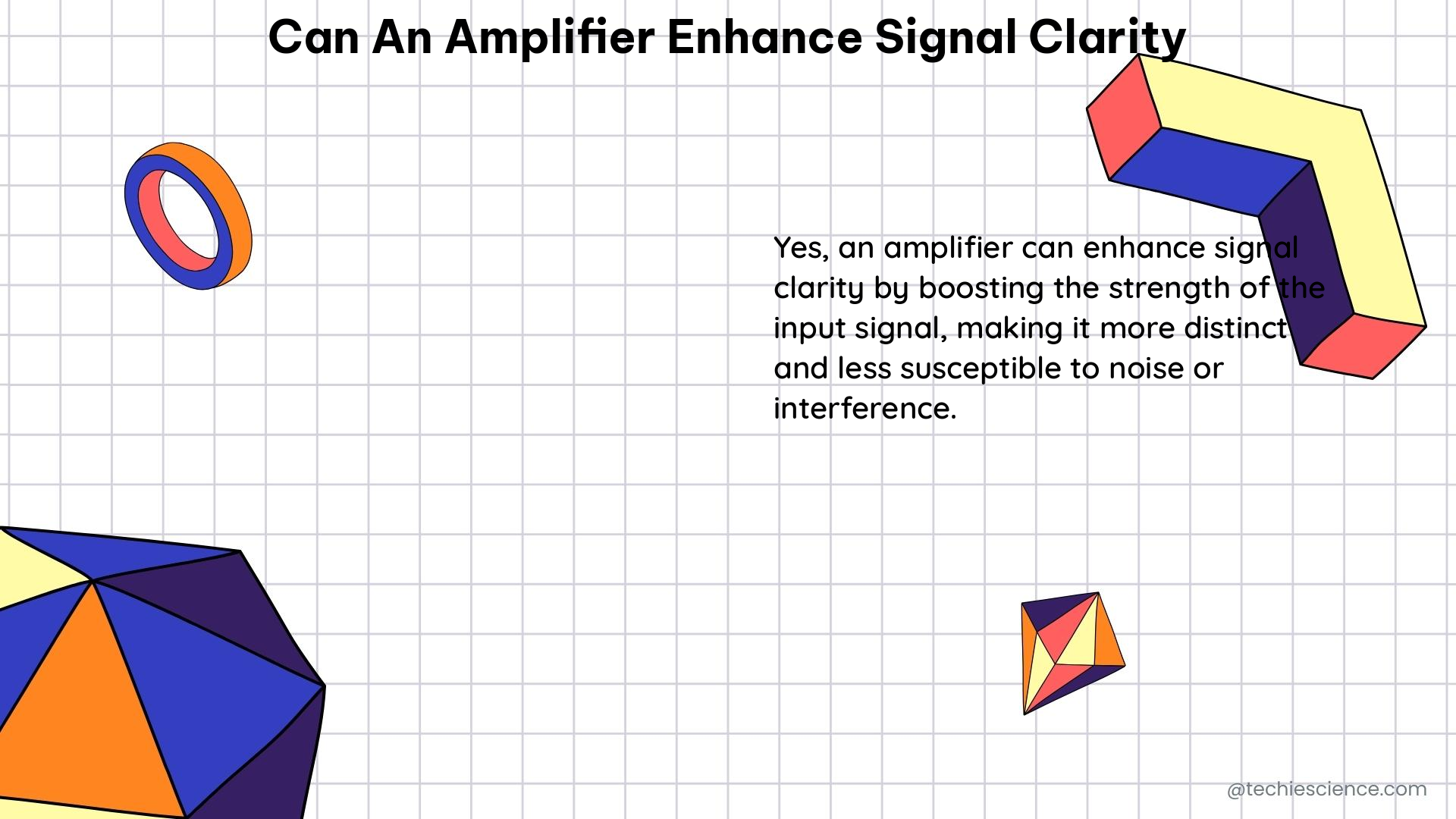An amplifier is a crucial component in many electronic systems, as it is responsible for increasing the strength or amplitude of a signal. However, the question of whether an amplifier can enhance signal clarity is not as straightforward as it may seem. The answer depends on various factors, including the characteristics of the input signal, the noise sources present in the system, and the design of the amplifier itself.
Understanding Signal-to-Noise Ratio (SNR)
The key metric to consider when evaluating the impact of an amplifier on signal clarity is the signal-to-noise ratio (SNR). SNR is a measure of the strength of the desired signal relative to the background noise level. It is typically expressed in decibels (dB), with a higher SNR indicating a clearer signal.
Before amplification, the SNR of a signal can be calculated as:
SNR = 20 * log10(Vsignal_rms / Vnoise_rms)
where Vsignal_rms is the root-mean-square (RMS) value of the signal, and Vnoise_rms is the RMS value of the noise.
Amplifier Characteristics and SNR

When a signal is amplified, both the signal and the noise are amplified. The degree to which the noise is amplified depends on the characteristics of the amplifier, such as its gain and noise figure.
The noise figure (NF) of an amplifier is a measure of how much the amplifier degrades the SNR of the input signal. It is defined as the ratio of the input SNR to the output SNR, and is typically expressed in decibels (dB).
The output SNR after amplification can be calculated as:
SNR_out = SNR_in + Gain - NF
where SNR_in is the input SNR, Gain is the amplifier’s gain, and NF is the amplifier’s noise figure.
Practical Example
Let’s consider the scenario described in the original answer:
- Input signal range: 0-50 mV
- Input signal RMS: 0.05 / √2 = 0.035 V
- Input noise RMS: 1 mV = 0.001 V
- ADC range: 0-3.3 V
- ADC resolution: 12 bits
- ADC quantization error: 3.3 V / (2^12 – 1) = 0.0008 V
Without amplification, the input SNR can be calculated as:
SNR = 20 * log10(Vsignal_rms / Vtotal_noise_rms)
= 20 * log10(0.035 / sqrt(0.001^2 + 0.0008^2))
= 28.795 dB
Now, let’s assume we use an amplifier with a gain of 66 (to amplify the 0-50 mV signal to the 0-3.3 V range) and a noise figure of 3 dB.
After amplification, the output SNR can be calculated as:
SNR_out = SNR_in + Gain - NF
= 28.795 + 20 * log10(66) - 3
= 30.968 dB
The difference between the input and output SNR is 2.17 dB, which indicates an improvement in signal clarity after amplification.
Factors Affecting Signal Clarity
It’s important to note that the improvement in signal clarity is not solely dependent on the amplifier’s characteristics. Other factors that can affect signal clarity include:
- Noise Sources: The presence of additional noise sources, such as electromagnetic interference (EMI) or thermal noise, can degrade the overall SNR and limit the effectiveness of the amplifier.
- Bandwidth Limitations: The amplifier’s bandwidth must be sufficient to accommodate the frequency content of the input signal. If the amplifier’s bandwidth is too narrow, it may introduce distortion and reduce signal clarity.
- Nonlinearities: Amplifiers can introduce nonlinearities, such as harmonic distortion or intermodulation distortion, which can degrade the signal quality.
- Impedance Matching: Proper impedance matching between the signal source, the amplifier, and the load is crucial to minimize signal reflections and ensure maximum power transfer, which can improve signal clarity.
- Grounding and Shielding: Proper grounding and shielding techniques are essential to minimize the impact of external noise sources and ensure a clean signal path.
Conclusion
In summary, an amplifier can enhance signal clarity by increasing the SNR of the input signal, provided that the amplifier’s characteristics, such as gain and noise figure, are well-matched to the input signal and the overall system design. However, it’s crucial to consider other factors, such as noise sources, bandwidth limitations, nonlinearities, and impedance matching, to ensure the best possible signal clarity.
References:
- What is the point of signal amplification if noise is also amplified?
- Audio system measurements
- What is a Signal Amplifier?
- Noise Figure and Signal-to-Noise Ratio
- Impedance Matching in Electronic Circuits
- Grounding and Shielding Techniques in Instrumentation

The lambdageeks.com Core SME Team is a group of experienced subject matter experts from diverse scientific and technical fields including Physics, Chemistry, Technology,Electronics & Electrical Engineering, Automotive, Mechanical Engineering. Our team collaborates to create high-quality, well-researched articles on a wide range of science and technology topics for the lambdageeks.com website.
All Our Senior SME are having more than 7 Years of experience in the respective fields . They are either Working Industry Professionals or assocaited With different Universities. Refer Our Authors Page to get to know About our Core SMEs.